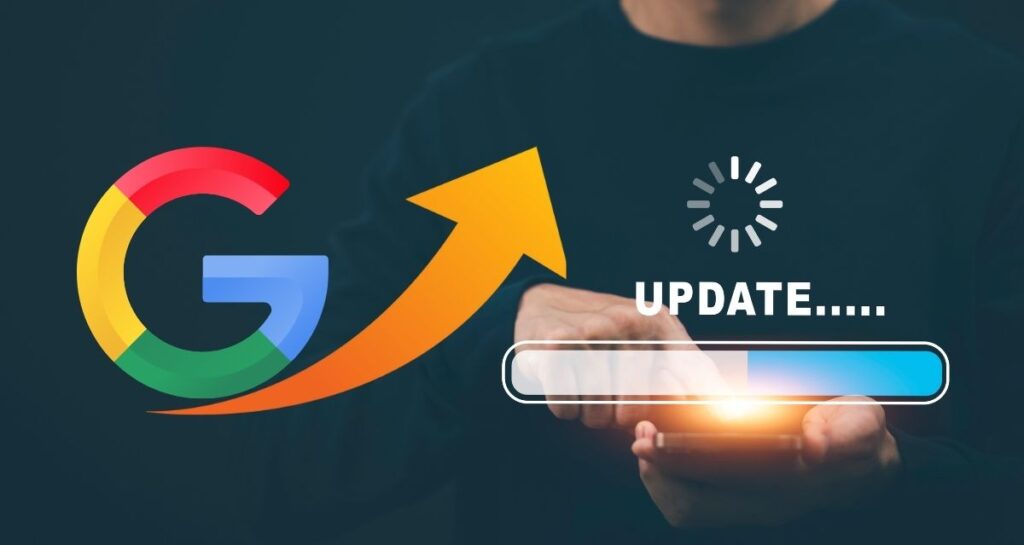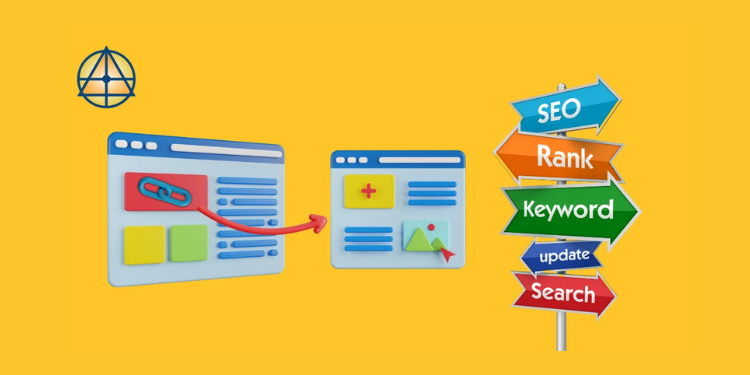In today’s fast-paced digital landscape keeping up with Google’s latest updates is more important than ever. From changes to the Google Chrome browser and Play Store to major shifts in search rankings driven by core algorithm updates. These developments affect both everyday users and businesses trying to stay visible online.
In this article, we’ll explore essential updates like Google’s algorithm changes, core updates and influential rollouts such as Hummingbird, Penguin and Panda plus offer practical tips to help you stay ahead of the curve.
Update google chrome browser for speed and security
One of the most frequent and necessary actions any internet user should take is to update Google Chrome browser. Google Chrome updates bring enhanced features, bug fixes and most importantly security patches.
Chrome remains the most popular web browser globally, and for good reason. With every google updates, Google improves page load times increases compatibility with modern websites and closes security vulnerabilities. If you’re using an outdated version you risk performance degradation and potential data leaks.

Google chrome updates what to expect
Each Google Chrome update comes with something new. Over the past year users have seen improved password management battery-saving features for laptops and stricter ad filtering. Developers too benefit from richer dev tools and better integration with performance metrics.
Chrome now supports broader accessibility standards and experimental technologies like WebGPU. Users should ensure automatic updates are enabled or manually check the version number to stay current.
Google updates beyond the browser
While browser updates are regular Google updates also roll out across platforms like Gmail, Google Docs and Google Sheets. For instance, tracking the last updated date in Google Sheets helps users monitor feature rollouts like enhanced collaboration tools or AI-powered autocomplete.
Google’s suite of products is interconnected and improvements to one service often enhance others. From layout changes to performance optimizations these updates refine the user experience.

Google play store update more than just apps
A Google Play Store update may seem minor but it’s a vital part of maintaining Android device security and app performance. With every update, Google refines app vetting processes, permission control and layout optimization.
In recent updates, the Play Store has incorporated advanced privacy indicators, real-time malware scanning, and improved parental controls. For developers, staying in sync with the latest guidelines is crucial for app visibility and user retention.
Google algorithm update major shifts in search behavior
Search Engine Optimization (SEO) is often influenced by the infamous Google algorithm update. These updates change how search results are ranked and displayed. While some updates are minor others can be transformative.
Every business or content creator that relies on organic traffic must pay attention to these updates. From keywords to user behavior, Google continues to evolve how it evaluates content relevance and quality.
Google core update focus on E-E-A-T and user intent
A Google core update is a substantial algorithm adjustment that impacts search engine results across all categories. The most recent core update in March 2025 put a heavy emphasis on E-E-A-T (Experience, Expertise, Authoritativeness and Trustworthiness) Websites that demonstrated in-depth research, real-world experience and clear authorship saw improvements in rankings. Thin content low-quality AI-generated material or content lacking substance faced significant drops. Understanding these shifts is essential for adapting your content strategy effectively.
Historical google updates hummingbird, panda, penguin
Beyond recent changes, it’s important to understand key Google updates that have shaped the current algorithm:
Hummingbird (2013) was a complete overhaul of the core algorithm, designed to better understand searcher intent rather than just match keywords. It introduced semantic search, making Google much more conversational and context-aware.
Panda (initially rolled out in 2011) targeted low-quality content. Websites with duplicate, thin, or spammy content saw massive declines. Panda emphasized original, valuable content written for users—not just search engines.
Penguin (launched in 2012) tackled manipulative link-building practices. It penalized sites using spammy or paid backlinks and rewarded those with organic, authoritative links.
These updates are still part of the broader Google core algorithm, constantly refined through additional updates. Knowing their history helps SEOs and marketers create sustainable, long-term strategies.
Difference between update and event on google business
Understanding the difference between update and event on Google Business is important for local visibility. An “update” is used to share business news, announcements, promotions or new offerings. These are ongoing pieces of information that inform customers.
An “event,” however, is time-specific and used for workshops, sales days, grand openings, or seasonal campaigns. Using both correctly can boost engagement and improve how your business appears on Google Search and Maps.
Importance of monitoring google updates
Each Google update, whether it’s Chrome, Play Store, or algorithm-related, impacts how users interact with the web. Google makes these changes to improve user satisfaction, security, and information accuracy.
For individuals, regular updates ensure smoother digital experiences. For marketers and developers, these updates can dramatically influence visibility, engagement, and even revenue. Monitoring updates is no longer optionalit’s essential.
Stay ahead with google’s ever-evolving ecosystem
Google’s constant updates are like the weather of the digital worldthey change how we surf the web, how brands connect with customers and which content climbs to the top of search results. Whether you’re troubleshooting Chrome after an update, scrambling to recover from Panda’s strict quality checks or rebuilding your strategy post-Penguin, one thing’s clear: falling behind isn’t an option. The algorithms won’t pause for stragglers but the good news? Those who learn to dance with the changes often come out on top.
Here’s the reality: What worked yesterday might flop tomorrow. Maybe your traffic dipped after the latest core update or your site’s still recovering from old SEO missteps. It’s frustrating but adaptability is the name of the game.
That’s where we come in. At Resilient Mastery Agency we don’t just chase Google’s updates we anticipate them. Our team builds digital strategies that bend instead of break, crafts SEO that’s built for the long haul and designs branding that sticks even when algorithms flip the script. Think of it as shock-absorbing your online presence.
FAQS
How do I update Google Chrome?
To update Google Chrome, open the browser and click on the three vertical dots (menu icon) in the top-right corner. From the drop-down menu, go to Help > About Google Chrome. Chrome will automatically check for updates and install the latest version if available. Once the update is complete, you’ll need to restart the browser for the changes to take effect. Keeping Chrome updated ensures you have the latest security patches and performance enhancements.
How to check Google Chrome update?
You can check if your Google Chrome is up to date by going to Settings > About Chrome. You’ll find this option by clicking the three-dot menu in the upper-right corner, then navigating to Help > About Google Chrome. Here, Chrome will display your current version and automatically check for updates. If an update is available, it will begin downloading instantly. It’s recommended to check periodically if automatic updates are turned off.
How often does Google Earth update?
Google Earth doesn’t update in real time, but it does receive periodic updates throughout the year. On average, satellite imagery is refreshed every 1 to 3 years, depending on the location. Densely populated and high-interest areas tend to get more frequent updates, while rural or remote locations may not change as often. You can sometimes see the “image capture date” in the bottom corner of the screen to know when a specific location was last updated.
Why is my Google News not updating?
If Google News is not updating, it could be due to several reasons. Check your internet connection first, as a weak signal can prevent the app or site from refreshing. Also, ensure the app has the necessary permissions and that background data usage is enabled. Cached data or temporary glitches can also interfere with updates—try clearing the app cache or reinstalling the app. Make sure you’re signed in with your Google account and your news preferences are set correctly to receive relevant content.
Why won't my Google News feed update?
If your Google News feed isn’t updating, it might be related to syncing issues or outdated app settings. Start by restarting your device and checking for any pending updates in the Google News app from the Play Store or App Store. Ensure background refresh is enabled in your device settings, especially for iOS users. Additionally, check if battery saver or data saver modes are on, as they can limit background activity and prevent your news feed from loading the latest stories.








